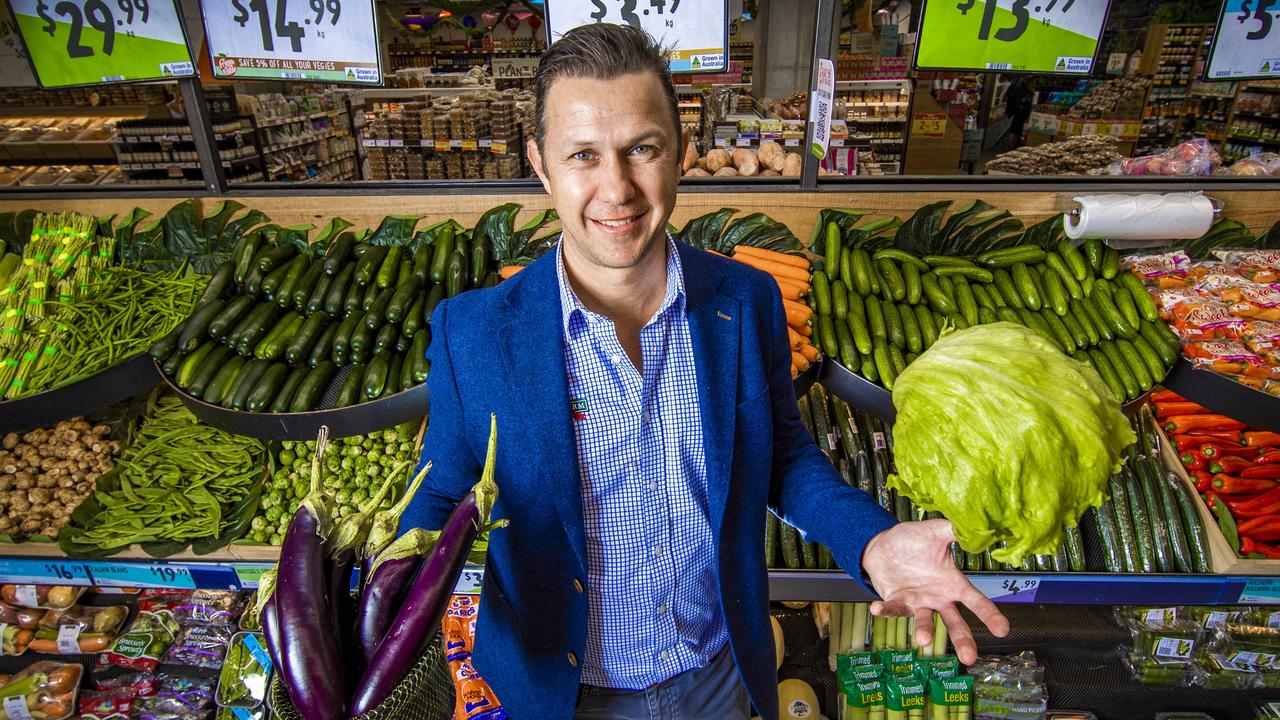Queensland jeweller targets Millennials with diamond rings that don’t cost the earth
Brisbane-based jeweller Michael Hill recently unveiled the 40-year-old jewellery chain’s latest innovation — lab-grown diamonds in a bid to lure new customers.
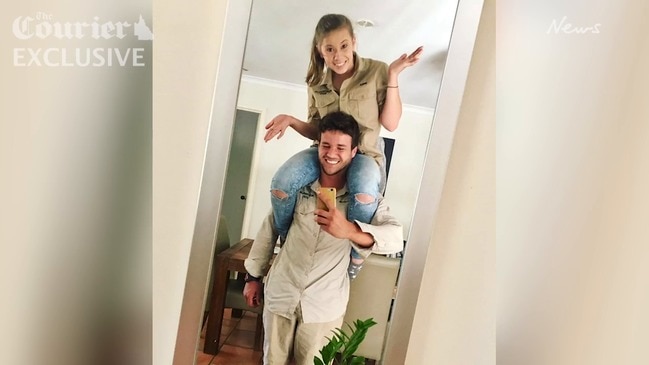
QBM
Don't miss out on the headlines from QBM. Followed categories will be added to My News.
Opening a small pastel purple box amid the bustle of a store preparing for Christmas, Daniel Bracken proudly pulls out a simple, yet glistening ring.
“This is 3 carats – $58,000 for a 3 carat VS diamond – it’s a pretty amazing price,” he says referring to the size and clarity of the gem in his hand. “If that was mined, it would be over $100,000.”
The chief executive of Brisbane-based Michael Hill recently unveiled the 40-year-old jewellery chain’s latest innovation — lab-grown diamonds.
He says Michael Hill is the first major jeweller in Australia to launch an alternative to mined diamonds. It now designs and manufactures a range of fine jewellery in Brisbane using Fenix Diamonds grown in Surat, India which is known as the “diamond city of the world”.
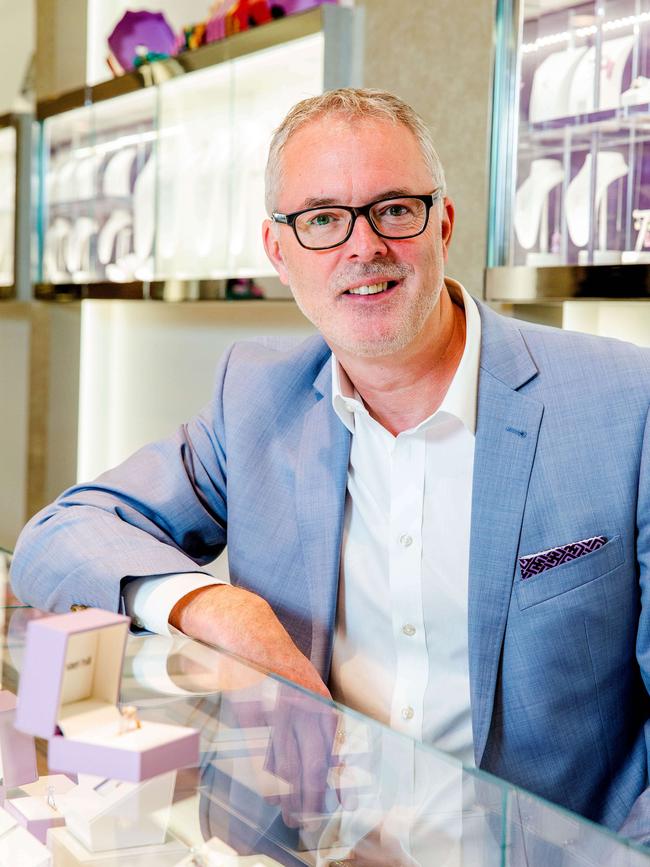
Taking about four weeks to grow, Bracken says the diamonds have the same chemical characteristics of a mined diamond due to the way they are produced using a unique method that recreates the Earth’s forces in a state-of-the-art facility.
The diamonds are genuine and certified – not simulants or synthetic.
Bracken says although it has only been selling the range for just over two months across 11 of its stores, the idea is popular in the US.
“The research coming out of the US, which is why we launched this, suggests Millennials are drawn to lab-grown diamonds because there’s a sustainability angle,” he says.
“There’s a really clear path of providence – so no more blood diamonds.
Bracken says with lab-grown diamonds customers are not always choosing to trade off for something cheaper, but rather something bigger.
“So you may come in with a budget for a one-carat mined ring, but you could actually buy a 1.5 carat lab-grown and that’s kind of the way we’ve introduced it, he says. “The customer can actually get something bigger and better than what you can with a mined diamond.
“The design of the ring is deliberately minimal because we believe that’s more what the Millennials are after – they don’t want it to be tricked up, they want it to be a really simple and showcased diamond.”
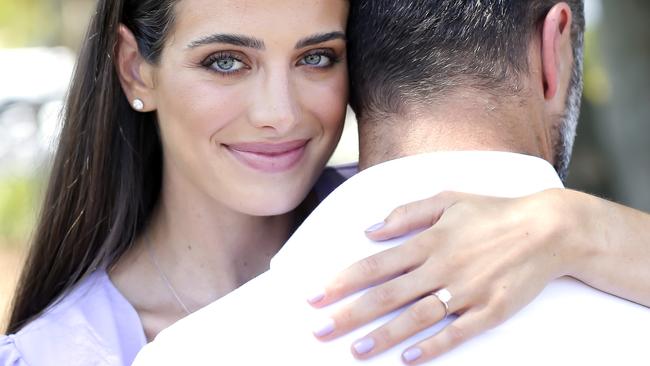
The jeweller’s move into this market follows 21-year-old Queensland wildlife conservationist Bindi Irwin’s recent engagement to boyfriend Chandler Powell, who proposed with a lab-grown diamond set with recycled rose gold.
Michael Hill’s new Fenix Created Diamond range currently features a ring similar in style to Irwin’s in a clear pitch to a younger, socially conscious market.
Bracken says it is too early to say what impact this will have on mined diamond sales in Australia but US retailers have seen between 10 to 20 per cent of their diamond solitaire business shift to lab-grown diamonds.
The new product comes as Bracken, a former deputy CEO of Myer, wraps up his first year in the top job at Michael Hill where he has managed to put some sparkle back in to the brand.
He reported in October that the jeweller had built on the positive momentum from the final months of last financial year to post an “encouraging” 11.9 per cent jump in first quarter sales on a like-for-like basis, a closely watched industry metric which strips out the impact of stores opening and closing. The result for the year to June 30, a $16.5 million net profit from continuing operations, had been disappointing.
Over the past year the company has withdrawn from the US market, exited its ill-fated Emma & Roe brand and discovered, like a number of other high-profile companies, that it had underpaid staff, which it is in the process of rectifying.
Emma Hill, the company’s chair told shareholders at the annual general meeting in October that it had been a year of “transition and change” for the business founded by her parents Michael and Christine Hill in New Zealand in 1979.
Michael Hill employs 3500 workers globally and after the restructure of the past year has 300 stores in Australia, New Zealand and Canada, plus an online offering.
The company opened its first stores in Brisbane back in 1987 and moved its support centre here in 2005. Its Queensland workforce now numbers 700 with half of these employees based at the Murarrie head office.
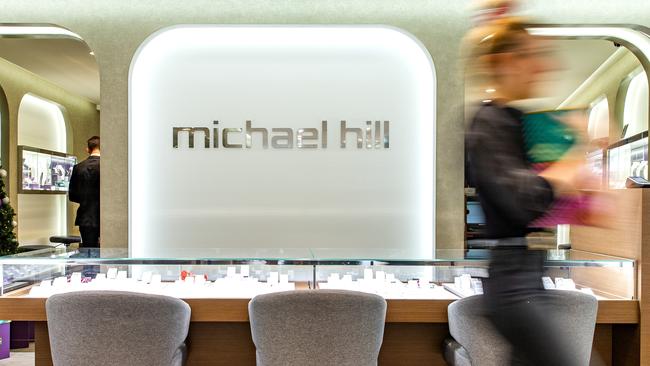
One of Bracken’s goals is to build the company’s online business but it will never replace the bricks and mortar stores. He says as a category, jewellery has been slow to tap online opportunities.
“There are lots of reasons for that,” he says. “The principal reason is there is a pause-point for a customer. If they’re going to spend $1000, they want to see it.
“Jewellery is a very romantic category, fundamentally online is a very transactional process so what we’re seeing is an increasing amount of research done on our website but consumers still want to come in and try it on.
“Our average selling price online is much lower than our average selling price in store.”
Bracken says while Michael Hill’s business is growing, the jewellery industry as a whole is in decline.
“We’re growing at double digits, and the category is in decline, even with our numbers in there, which says that other jewellers are not clearly having the successes we are.
“Retail as a whole is tough and brands that aren’t willing to innovate are finding it hard.
“We are taking market share, albeit it’s small wins at this point, but we are winning in a challenging environment because of all of the changes we’re making to our business.”
The company is not planning a massive roll out of new stores in its key Australian and New Zealand market.
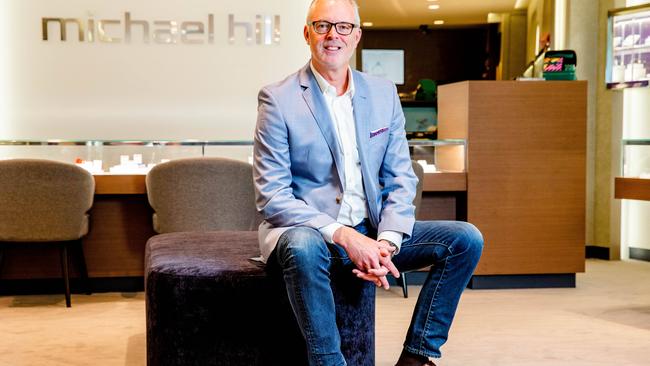
“We feel like we’re at a level of maturity in New Zealand and Australia,” Bracken says.
“There will be new stores and there will be other stores that go.
“We think expansion for us will come in a digital way. Currently our only digital channels are our own websites so could Michael Hill be sold on other aggregation websites? Absolutely, and are we in discussion with certain retailers.
“Canada still has another 10 to 15 stores in it at an appropriate time so there’s a little bit of physical expansion. Are we interested in other markets? Yes.”
Queensland is currently Michael Hill’s second highest performing state in Australia. It is also home to over 10 per cent of the total stores globally and outranks many other states on a sale per store basis.
Its new flagship store in Brisbane’s Queen St Mall is one of the best performing stores in Australia.
“We’re on a journey of innovation and transformation and as a result we’re ahead of the game and we’re very proud of that, ” Bracken says

